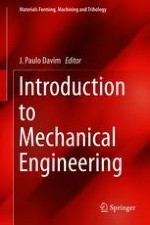2018 | OriginalPaper | Buchkapitel
4. Gradation, Dispersion, and Tribological Behaviors of Nanometric Diamond Particles in Lubricating Oils
verfasst von : Kai Wu, Bo Wu, Chuan Li, Xianguo Hu
Erschienen in: Introduction to Mechanical Engineering
Aktivieren Sie unsere intelligente Suche, um passende Fachinhalte oder Patente zu finden.
Wählen Sie Textabschnitte aus um mit Künstlicher Intelligenz passenden Patente zu finden. powered by
Markieren Sie Textabschnitte, um KI-gestützt weitere passende Inhalte zu finden. powered by
